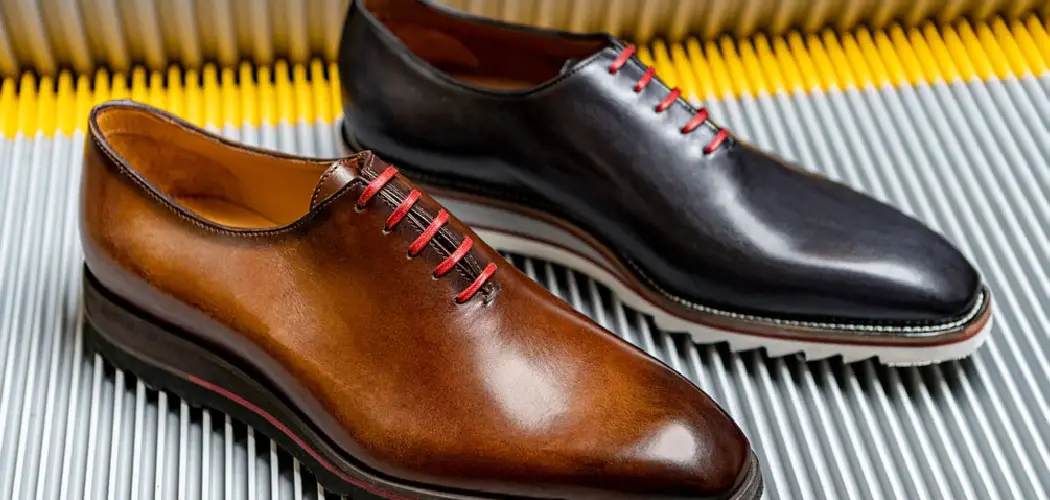If you invest in quality Italian leather shoes, then it’s important to care for them properly so they maintain their integrity and last longer. High-quality leather can be expensive but if you take the time to learn how best to treat it, you can keep your beloved shoes looking great season after season.
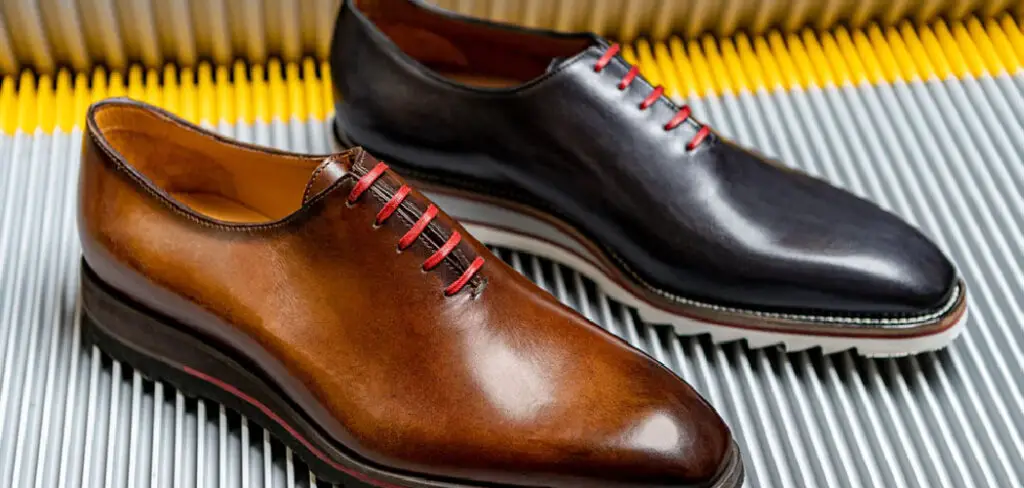
In this blog post on how to care for Italian leather shoes, we’ll take a look at some of the best practices for caring for your Italian leather shoes and why taking the extra steps to nurture them is worth it in the long run. So read on as we explore what makes these luxury items special and tips on how everyday you can keep their Italian leather goods looking fabulous.
At First How to Sort Out if It is Your Leather Shoes Made by Italy
1. Read the Label
Firstly, read the label carefully, as Italian leather shoes would be made in Italy and have an “Made in Italy” or “Produced in Italy” tag on them. If you do not see any label, then it is best to avoid buying them. When you doubt, verify the authenticity of leather with the seller. Then move on to the other ways.
2. Check the Quality of Leather
Italian leather shoes are known for their superior quality leather, and thus examining the leather is an important step when verifying if they are genuine Italian-made leather shoes or not. Genuine Italian leather will be soft and supple, yet sturdy enough to last several years. If the leather is too stiff, hard, or thin, it may not be genuine Italian-made leather shoes.
3. Look at the Craftsmanship
Italian shoemakers have a long history of producing some of the world’s highest quality luxury shoes and they take craftsmanship very seriously. Look for well-crafted details like hand stitching, intricate patterns and perforations for a distinctive Italian look. Any imperfections or lack of detail should be taken as a sign that it may not be genuine Italian leather shoes.
4. Inspect the Soles
Italian leather soles are known to be thicker and more durable than other types of leather soles. If the sole of your shoes are too thin, it could be a sign that they are not genuine Italian-made leather shoes. If you find any signs of wear or tear on the sole then it’s a sign that you should look for better quality Italian leather shoes.
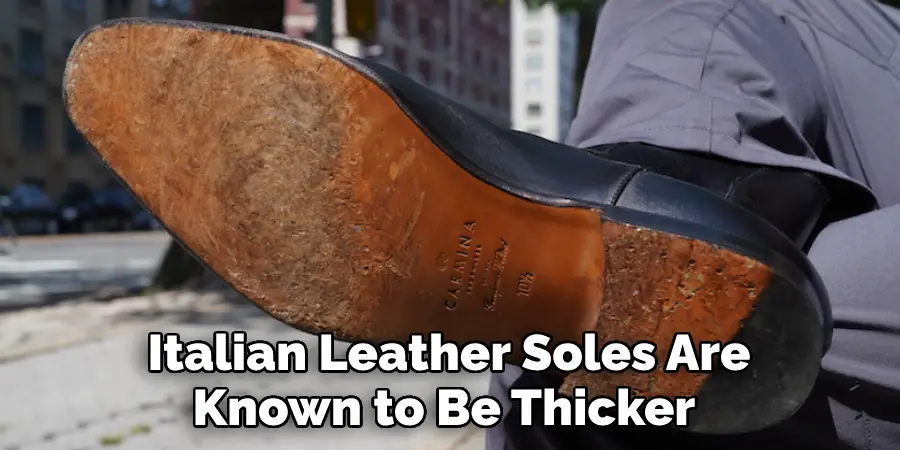
5. Examine the Sole Design
Italian leather soles are usually designed with a distinctive “ripple pattern” or “wave pattern” which can be seen when the sole is viewed from the side. If you find any other patterns or shapes then it could be a sign that these are not Italian-made leather shoes. After sorting out whether it is Italian leather shoes or not, then you can start to care for them:
6. Check the Price
In general, genuine Italian leather shoes are more expensive than other types of leather shoes. So if you find a deal that is too good to be true, it could be a sign that they are not genuine Italian-made leather shoes. It is best to purchase shoes from a reputable seller with good reviews.
7. Smell
Italian leather shoes have a distinct smell which you can identify easily. The smell should be natural and not artificial or chemically induced. Once you have identified the smell, it will be easy to distinguish between genuine Italian leather shoes and any other imitation. After you have identified the Italian leather shoes, then it’s time to start caring for them.
8. Check for its Color
The color of genuine Italian leather shoes should not contain any artificial additives or glazes and should remain unchanged from when you purchased them. Artificial colors or glazes may indicate that the shoes were not made with genuine Italian leather. If you notice that the color is fading or changing, it’s a sign that you should start caring for them.
9. Feel the Leather
Feel the leather of your shoes carefully and make sure that it feels soft and supple. Italian leather is known for its unique quality of being extra smooth and soft. Furthermore, inspect the stitches as they should be even and precise. If you find any loose or uneven threading then it could be a sign that the shoes are not genuine Italian leather.
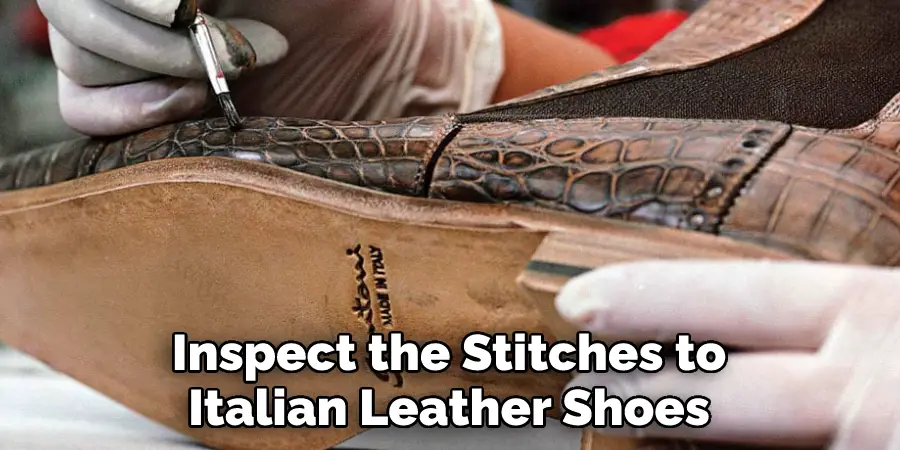
10. Checked Out by a Person Whom You Know Nearby
To be sure of its authenticity, have your Italian leather shoes checked by a person whom you know nearby who is knowledgeable about Italian leather shoes. This person can give you his/her opinion on the quality and authenticity of the leather and ensure that it’s genuine Italian-made leather before you start caring for them.
Hopefully this article on how to care for Italian leather shoes will also help you to identify that the shoes are genuine Italian leather and you’ve sorted out any imperfections. And now it’s time to start caring for them.
Best 11 Guidelines on How to Care for Italian Leather Shoes
Italian leather shoes offer a unique combination of luxurious style and quality craftsmanship. But like any other type of leather, Italian leather shoes require special care to keep them in good condition for years to come. Here are some guidelines on how to properly clean, store, and protect your Italian leather shoes:
1. Cleaning
For regular cleaning, use a damp cloth to remove dirt and dust. Then apply a leather cleaner or conditioner specifically designed for Italian leather shoes. Regularly apply the conditioner in order to keep the leather soft and supple. Whichever cleaner or conditioner you choose, make sure it’s free of lanolin and silicone.
2. Drying
To dry Italian leather shoes, use a soft cloth or paper towels. Do not let them air dry as this will cause the leather to become brittle over time. It ‘s best to dry them in a cool, dark place. Never use heating or cooling sources to speed up the drying process. If the shoes are wet, let them dry at room temperature.
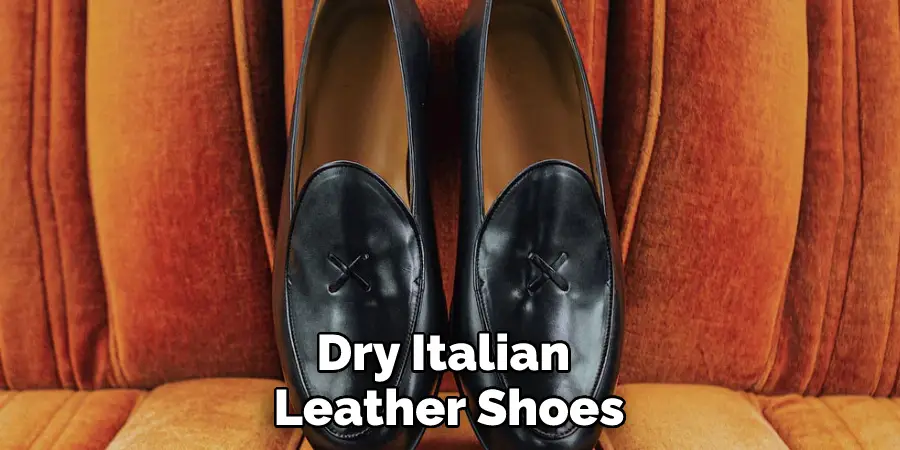
3. Storage
To store Italian leather shoes, use a shoe bag to help keep them dust and dirt free. Also, make sure to stuff the toe of each shoe with tissue paper so that they maintain their shape when not in use. Store the shoes away from direct sunlight and any other source of heat. You can also use cedar shoe trees to help absorb moisture from the inside of your shoes.
4. Protection
To protect Italian leather shoes from water, use a waterproofing product specifically designed for leather such as silicon or beeswax-based sprays or creams. Reapply the waterproofer periodically in order to keep the shoes protected from rain, snow, and other forms of moisture.
5. Polishing
To polish Italian leather shoes, use a gentle cream or wax-based product specifically designed for the type of leather your shoes are made from. Avoid using silicone and oil-based products as these can cause the leather to become brittle over time. When polishing, only use a circular motion so as not to damage the leather.
6. Protecting from Sunlight
Italian leather shoes should be kept away from direct sunlight at all times. The sun’s UV rays can cause discoloration and fading to the leather over time, which could lead to cracks or tears in the material. If you must keep them in direct sunlight, use a UV protection spray specifically designed for leather.
7. Spot Cleaning
For spot cleaning, use a damp cloth to remove any dirt or debris. Then apply a leather cleaner specifically designed for Italian leather shoes. If the stain is very tough, you may need to use an eraser or gentle brush to remove it from the shoe’s surface. It’s important to make sure you are not using any harsh chemicals or abrasive materials as this could damage the leather.
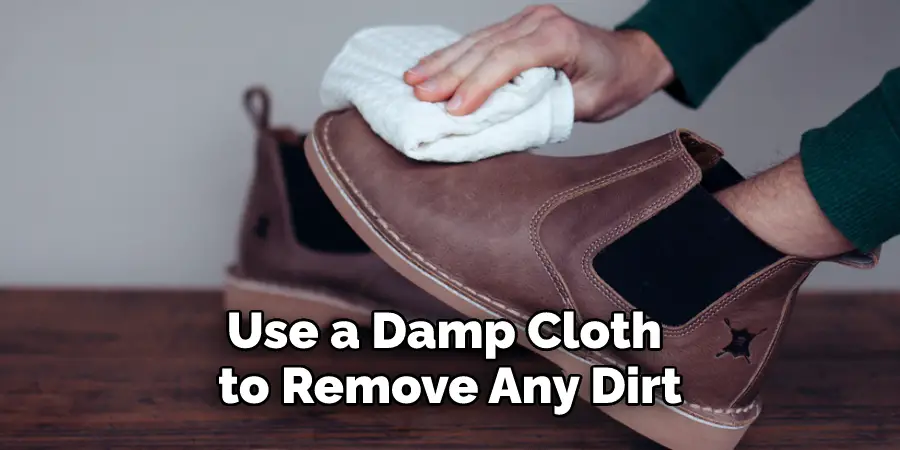
8. Pen Marks Elimination
For pen marks, first use a damp cloth to remove any excess ink. Then apply a small amount of rubbing alcohol directly onto the mark until it disappears. Be careful not to over saturate the area, as this could cause the leather to become too wet and potentially damage it.
9. Removing Salt Stains
For salt stains, use a damp cloth to remove any excess debris. Then apply an equal mixture of water and white vinegar directly onto the stain. Allow it to sit for 30 minutes, then wipe away with a clean cloth. This should remove any remaining residue from the leather.
10. Leather Shoe Scuffs
To remove scuffs, use a damp cloth and a small amount of rubbing alcohol or leather cleaner specifically designed for Italian leather shoes. Rub gently in a circular motion until the scuff disappears. If the scuff is still present after cleaning, use a soft eraser to gently remove it from the surface of the shoe.
11. Remove Oil Stains
For oil stains, use a clean cloth and a small amount of rubbing alcohol or leather cleaner specifically designed for Italian leather shoes. Gently rub in a circular motion until the stain is gone. If the stain persists, you can use an equal mixture of water and white vinegar to help remove it from the surface of the shoe.

With proper care and maintenance, Italian leather shoes can last for many years. By following these guidelines on how to properly clean, store, and protect your Italian leather shoes, you can ensure that they remain in top condition.
Final Thoughts
Taking care of Italian leather shoes takes a little bit of effort and understanding, but it is definitely worth the time and energy. It isn’t difficult to find quality shoe-care products that are designed to nourish and protect Italian leather, so put some thought into your purchase when selecting these items.
Additionally, be sure to store your shoes in a cool and dry environment—this should help preserve their beauty for many years.
Finally, no matter what type of shoes you own, regular cleaning and polishing will always reward you with an attractive pair of quality leather shoes. With a little bit of simple maintenance and knowledge you could have beautiful Italian leather shoes that look as good as new. So if you want to know more clearly on how to care for Italian leather shoes, you suggest you to read this article again.

